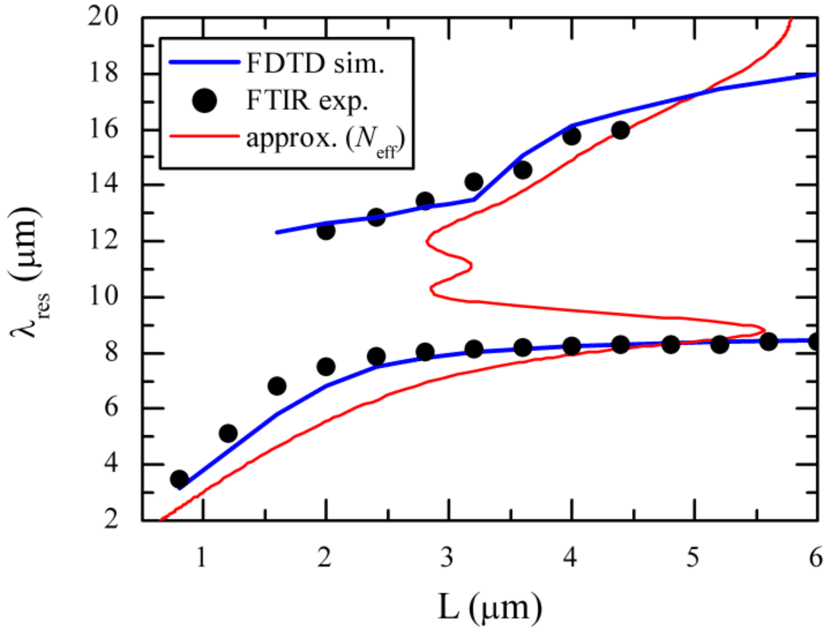
Plasmon Resonances of Mid-IR Antennas on an Absorbing Substrate: Optimization of Localized Absorption Enhancement
We report on the surface plasmon resonances of mid-infrared antennas deposited on an absorbing layer of silicon-rich oxinitride (SRON), and consequently, on their utilization for enhancement of a spatially localized absorption of IR radiation in SRON. The antenna resonances were determined from far-field IR reflection spectra measured over a broad mid-IR range where SRON possesses a significant absorption peak. These results were confirmed theoretically by electromagnetic FDTD simulations. Due to the specific character of dielectric functions around the absorbing band (known as anomalous dispersion), these far-field reflection spectra generally possess two resonant plasmonic peaks for each antenna of a specific length. It results in two branches of resonance wavelengths scaling nonlinearly with the antenna arm length (Fig. 1). To maximize spatially localized electromagnetic energy absorption in SRON, a compromise wavelength between that one for optimum plasmonic antenna resonances and absorption wavelengths of SRON itself must be chosen, as shown for both branches by numerical simulations. The principles of this method can be utilized in other materials absorbing in the mid-IR range, and, more generally, in other spectral regions, including visible one, where dielectric materials exhibit profound absorption resonance effects around specific wavelengths.

Fig. 1: Resonance wavelengths vs. antenna arm lengths (L). The red curve is yielded by the analytical formula λres = nSRON (λres)2L.
dub@fme.vutbr.cz
Powered by Eventact EMS